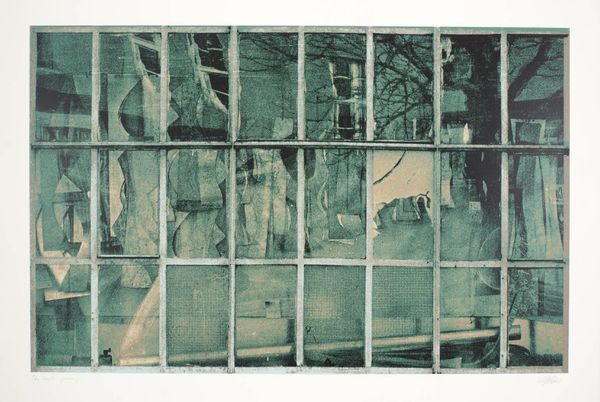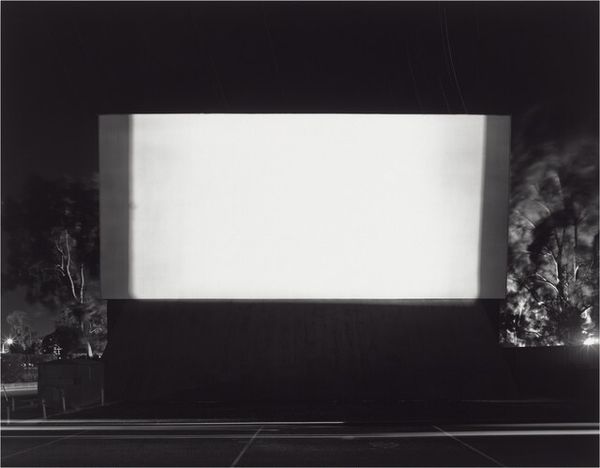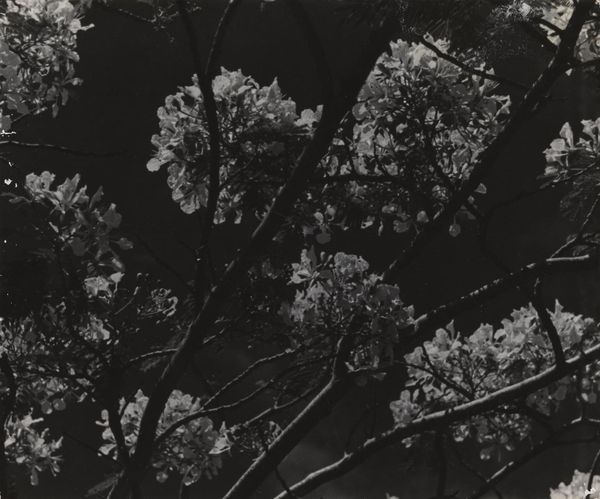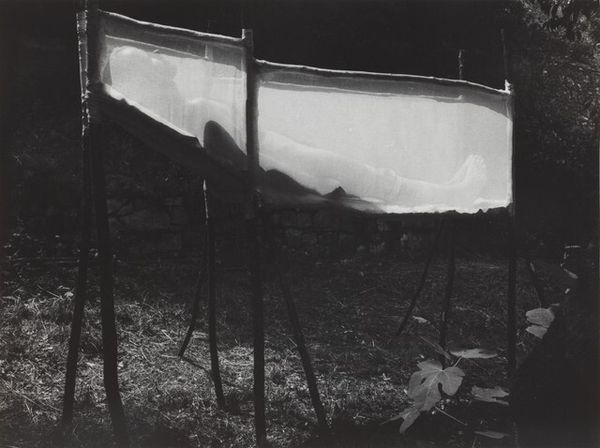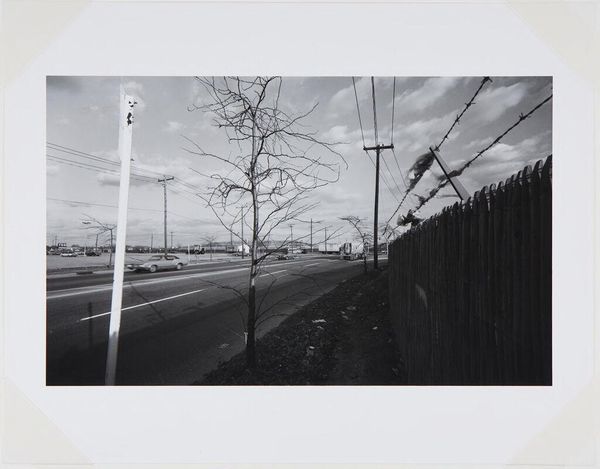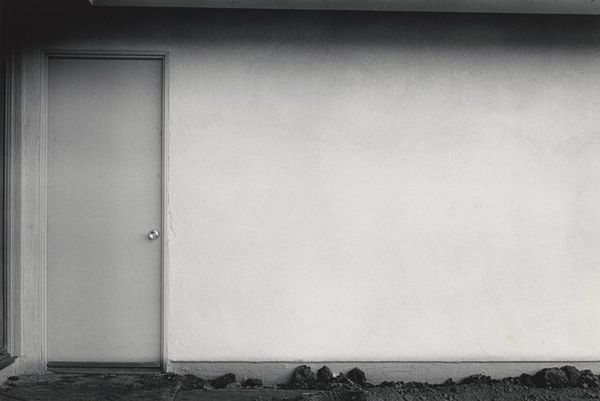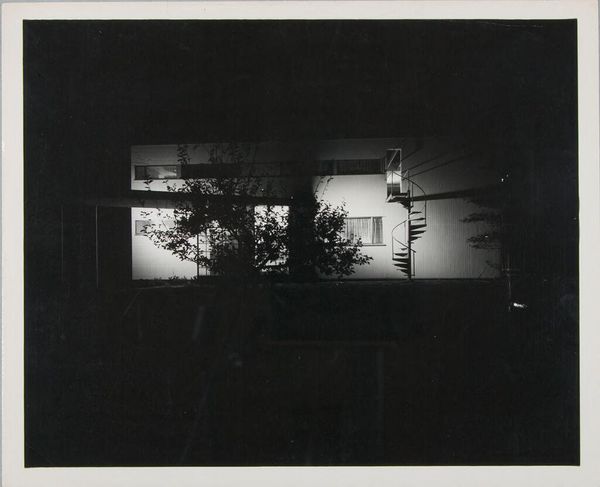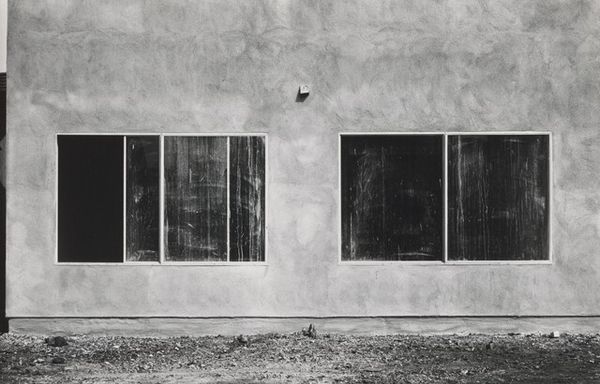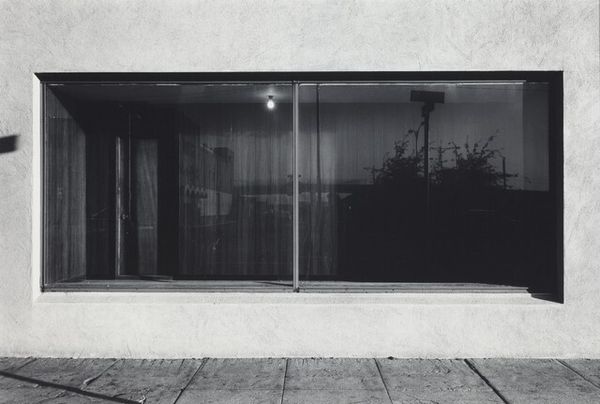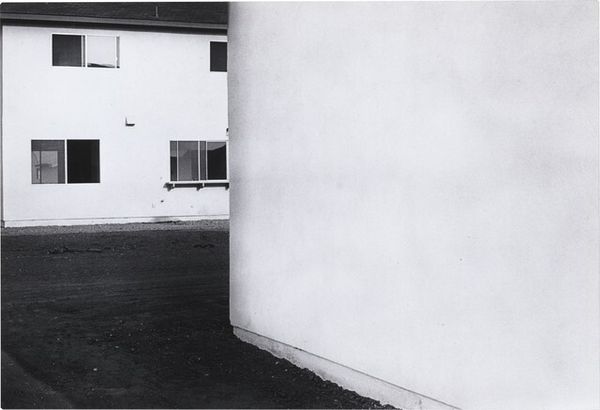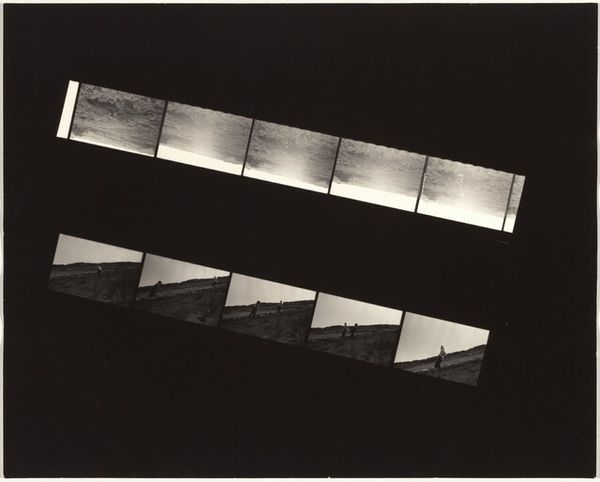
photography, gelatin-silver-print
#
conceptual-art
#
minimalism
#
sculpture
#
appropriation
#
landscape
#
photography
#
black and white
#
gelatin-silver-print
#
monochrome photography
#
cityscape
#
monochrome
#
monochrome
Dimensions: image: 15.2 x 22.9 cm (6 x 9 in.) mount: 27.5 x 27.7 cm (10 13/16 x 10 7/8 in.)
Copyright: National Gallery of Art: CC0 1.0
Curator: We’re looking at Lewis Baltz’s “West Wall, Semicoa, 333 McCormick, Costa Mesa” from 1974, a gelatin-silver print. What are your initial impressions? Editor: Stark. Utterly stark. The monochrome palette simplifies the scene to its essential forms. There's an oppressive weight to the solid black wall contrasting with the ghostly foliage projected onto the lighter surface. It feels desolate. Curator: The composition certainly guides us to consider such binaries. Baltz meticulously frames this banal subject matter—the side of a commercial building—heightening the contrast between the manufactured and the natural through tonality and spatial arrangement. The precise lines of the architecture stand in stark opposition to the organic forms of the trees and their shadows. Editor: Yes, the materiality interests me. The process of gelatin-silver printing, known for its fine detail and tonal range, transforms this otherwise unremarkable scene. Look at how that slick, hard surface of the building contrasts with the grainy texture of the vegetation. The work exposes not just a subject but also the means of production inherent in transforming urban space into art. The labor to create such stark realism, it’s intriguing. Curator: I find the conceptual rigor of Baltz’s approach compelling. He challenges conventional notions of beauty and photographic subject matter, inviting us to examine the often-overlooked aspects of the built environment. Note how the seriality evident in the placement of the young trees mimics the regimentation inherent in minimalist sculpture. The even lighting across the facade removes any trace of the photographer's subjectivity. Editor: But isn’t the lack of traditional artistic 'flair' itself a statement? He is clearly conscious of the aesthetic potential even within these industrial spaces. He reframes everyday visual culture by selecting specific, telling segments and forcing us to reconsider our perceptions of progress, labor, and consumption that underlie those locations. Curator: Ultimately, this photograph provokes introspection, wouldn’t you say? Editor: Indeed. It encourages us to re-evaluate our relationship with both the natural world and the artificial environments we create. A study in contrasts that speaks volumes about post-industrial alienation.
Comments
No comments
Be the first to comment and join the conversation on the ultimate creative platform.
